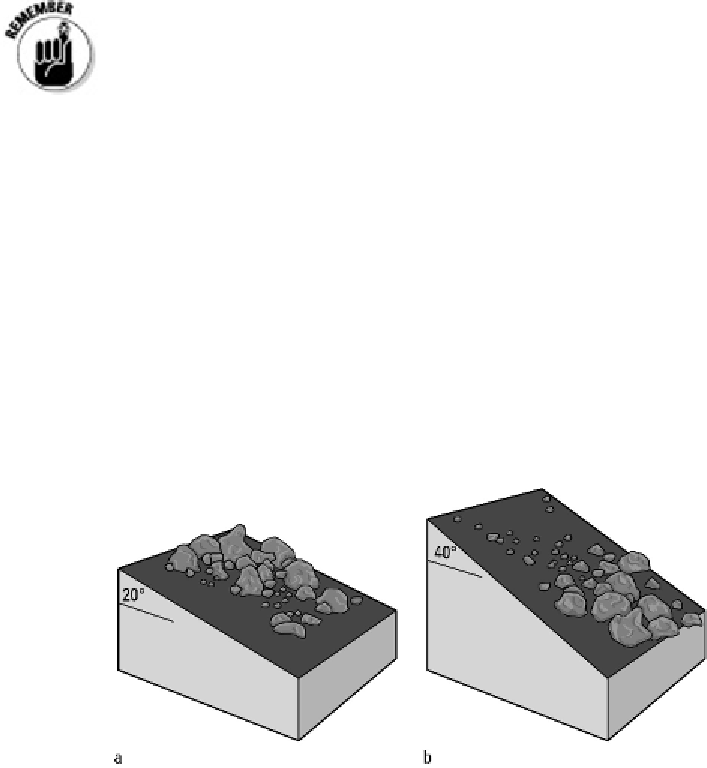Geology Reference
In-Depth Information
Holding Steady or Falling Down: Friction
versus Gravity
Gravity is constantly pulling materials
downslope
(toward the bottom of a slope), but a
counteracting force keeps things from always, immediately sliding down. The counter-
acting force is
friction,
which is in a constant tug of war against gravity. When friction is
winning, materials stay on the slope; when gravity is winning, materials slide downslope.
Friction
is the sticking force between two objects, in this case the earth mater-
ials and the surface of the slope. The amount of friction is determined by the
steepness and smoothness of the slope. When the force of friction is greater than
the pull of gravity, materials stay put. For example, a gentle slope or a slope with a
rough surface will have strong friction with the earth materials stacked on it. Un-
less the slope becomes steeper or the surface is smoothed out, little to no mass
wasting will occur.
However, if a slope surface is steep or smooth (or both), very little friction exists
between the slope and the materials, so they can slide all the way to the bottom (where
the slope flattens out).
Figure 11-1 illustrates two slopes: one (a) with a slight slope where friction is greater
than gravity and the materials are stable; and another (b) where the slope is steeper and
the force of gravity is greater than friction, resulting in mass wasting.
Figure 11-1:
In (a),
the friction over-
comes the pull of
gravity, so
everything stays
put. In (b), gravity
is greater than
friction so mass
wasting occurs.



